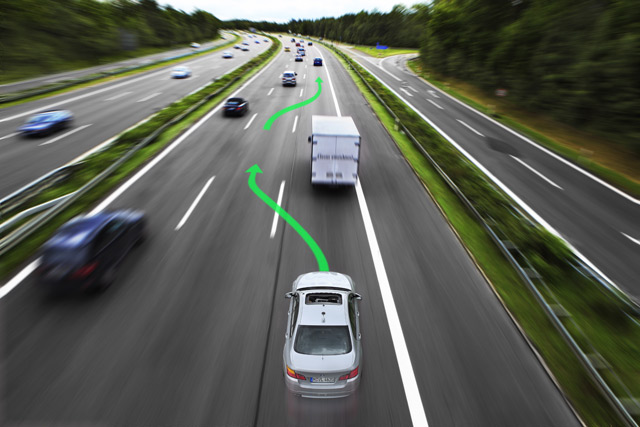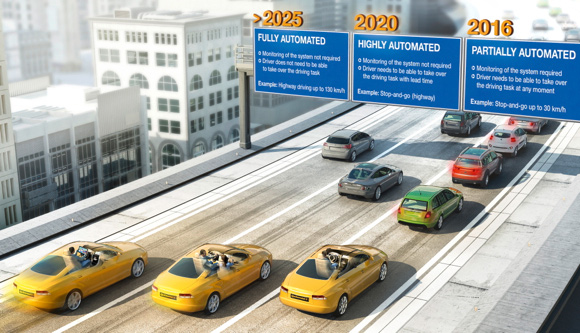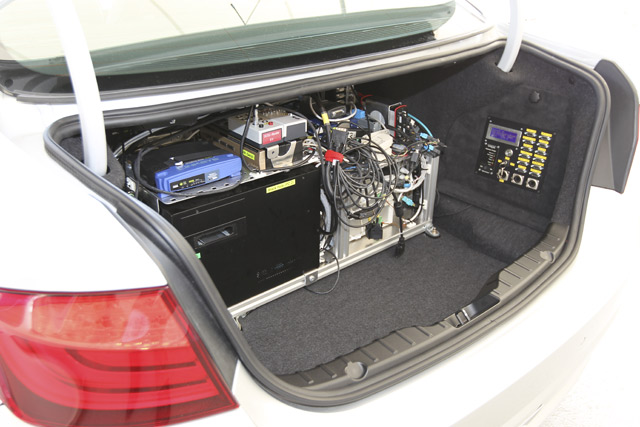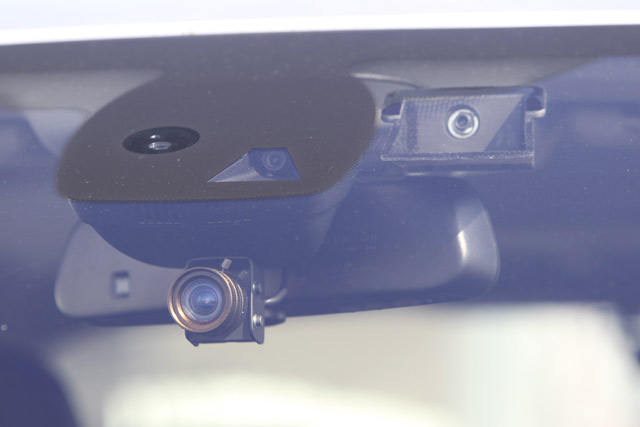BMW relies on unmanned vehicles

BMW has joined the development of fully automated passenger cars. In this direction, Google is leading the development, but car makers have all the necessary resources to catch up and overtake the leader. BMW management has set a goal to create fully autonomous car control systems until 2025.
BMW and Continental recently announced a research project for 2013-2014 , which will create a series of prototypes of technical systems for unmanned vehicles.
In subsequent years, these prototypes will be tested and brought to the stage of industrial designs. Tests are planned to be carried out on the roads of Germany and other European countries in order to test the systems in typical problem situations, such as intersections, toll roads, crossing national borders.
The plan is this: by 2016, separate autonomous systems will be ready. By 2020 - a highly automated prototype that can independently ride on individual sections of the road. By 2025, a completely autonomous BMW robot should be created, which will be able to ride in all areas without requiring a person in the car.

According to Google , the start of sales of unmanned vehicles will lead to three revolutionary changes in the market.
1. Reduction in the number of road accidents by 90%.
2. Reduction of time and fuel costs by 90%.
3. Reducing the number of cars by 90% .
One of the changes is a drastic decrease in sales of new cars. It would be natural if traditional automakers tried to resist future changes, ignoring the technical revolution. In a good way it is surprising that the BMW concern is throwing forces on the development of autonomous cars in the shortest possible time.
Explaining its decision, BMW first of all mentions the Vision Zero (Accident-Free Mobility) project. When switching to computer control, you can significantly reduce the number of accidents.
BMW emphasizes that in the last ten years it has developed a number of technical solutions that fit into the concept of fully autonomous cars. Investigations were also carried out within the framework of the BMW TrackTrainer and Emergency Stop Assistant projects.
For example, the TrackTrainer system made it possible to conduct a race car along the track along an optimal path, based only on readings from video cameras, GPS and a high-precision digital map of the track. Field trials were successfully conducted on October 21, 2009 at the old Nurburgring ring (22.8 km long in the North Loop). In May 2011, a demonstration took place on the American Laguna Seca highway in California, which is famous for elevations of 91 meters, numerous ascents and descents.
In mid-2011, a BMW Group Research and Technology division tested autopilot on the A9 motorway between Munich and Nuremberg, without intersections and traffic lights. The car prototype itself accelerated, braked and kept a distance with other cars on the road, driving all the way without human involvement, never violating the rules of the road (in the video)
Since then, the prototype has already overcome 10 thousand km . A computer control system has been developed for him, which includes lidar, ultrasonic sensors and video cameras with 360 ° all-round visibility. Externally, the car is practically no different from the serial. Just looking closely, you can see the camera behind the windshield, openings for sensors around the perimeter of the body.



